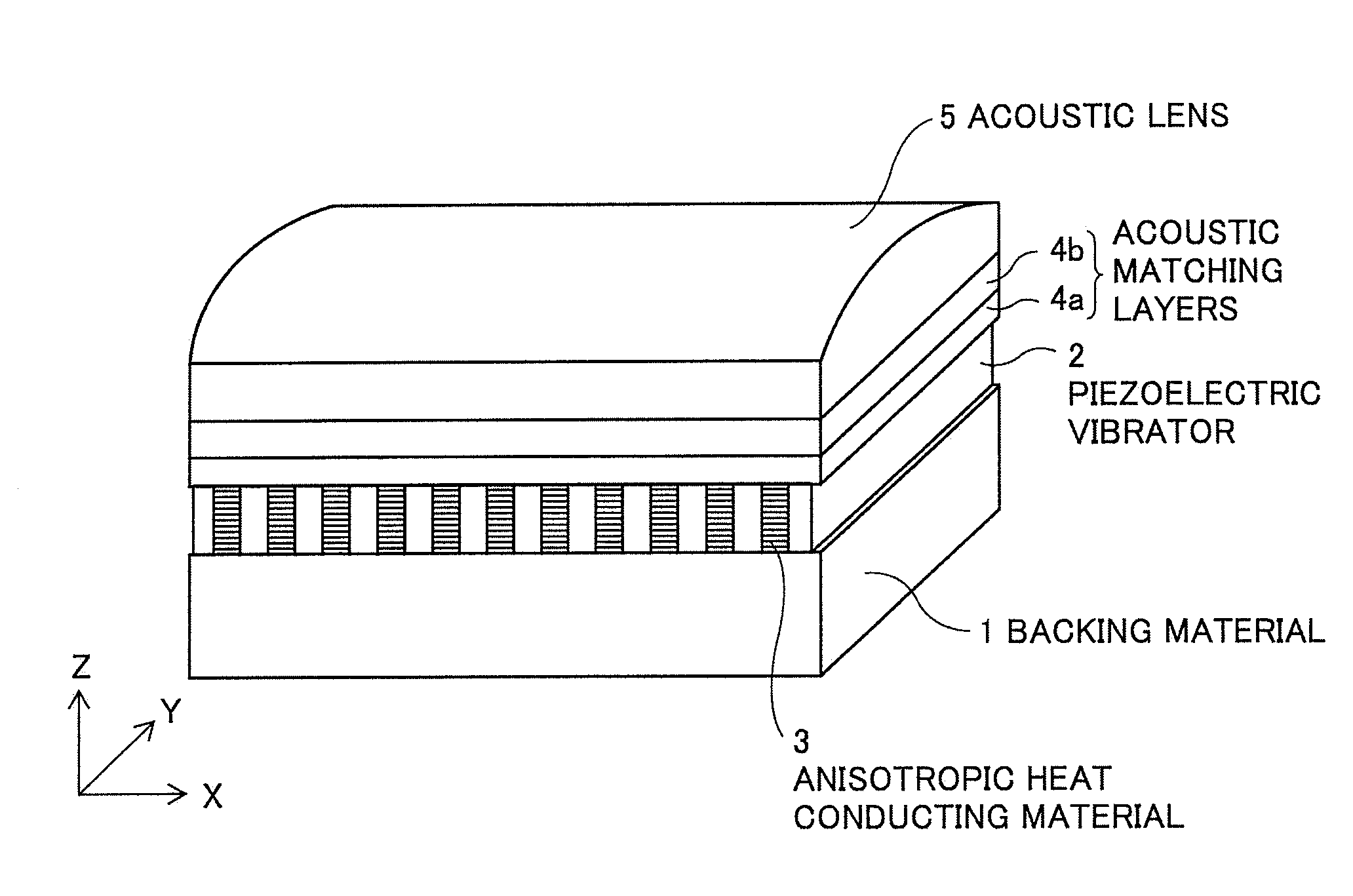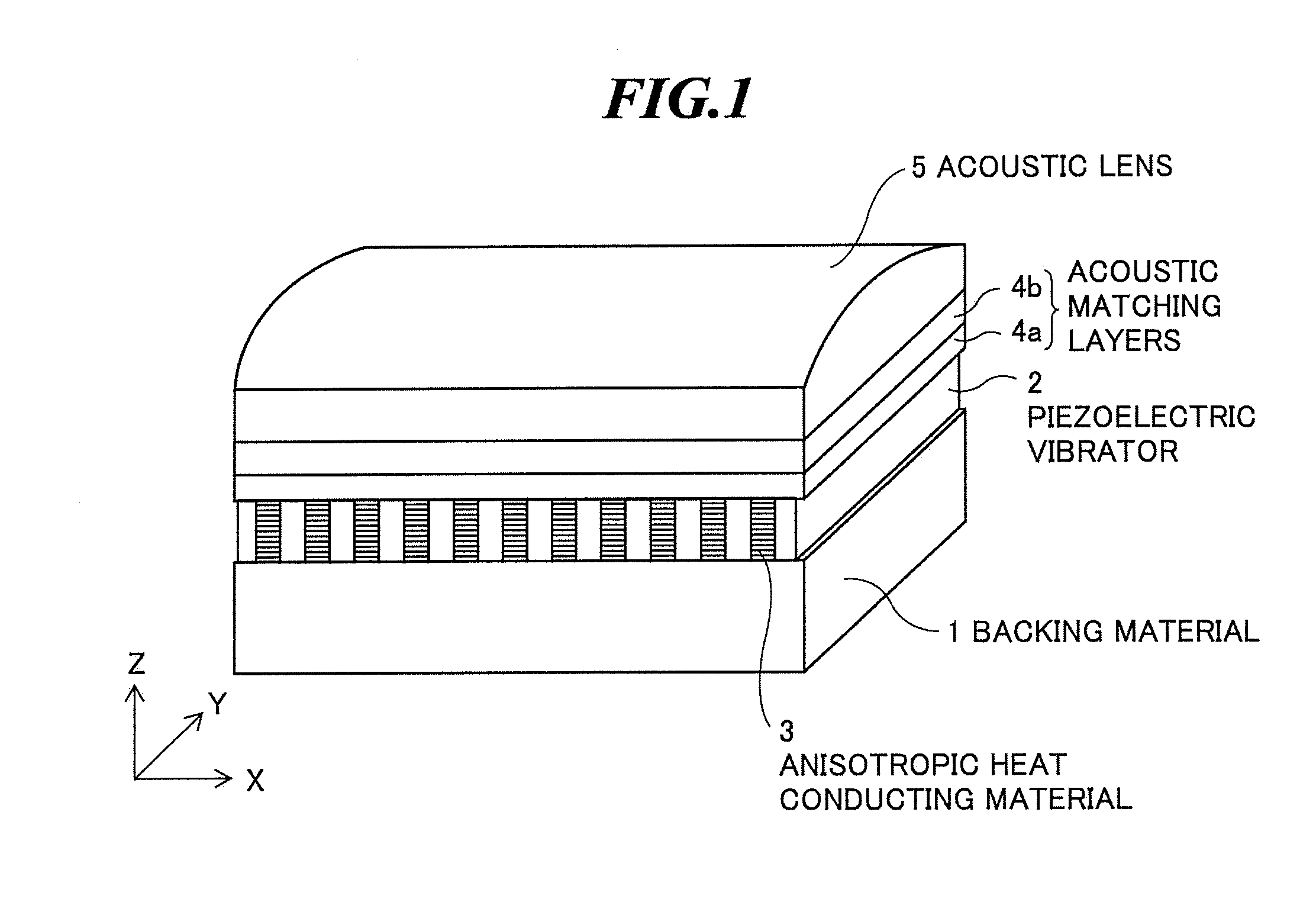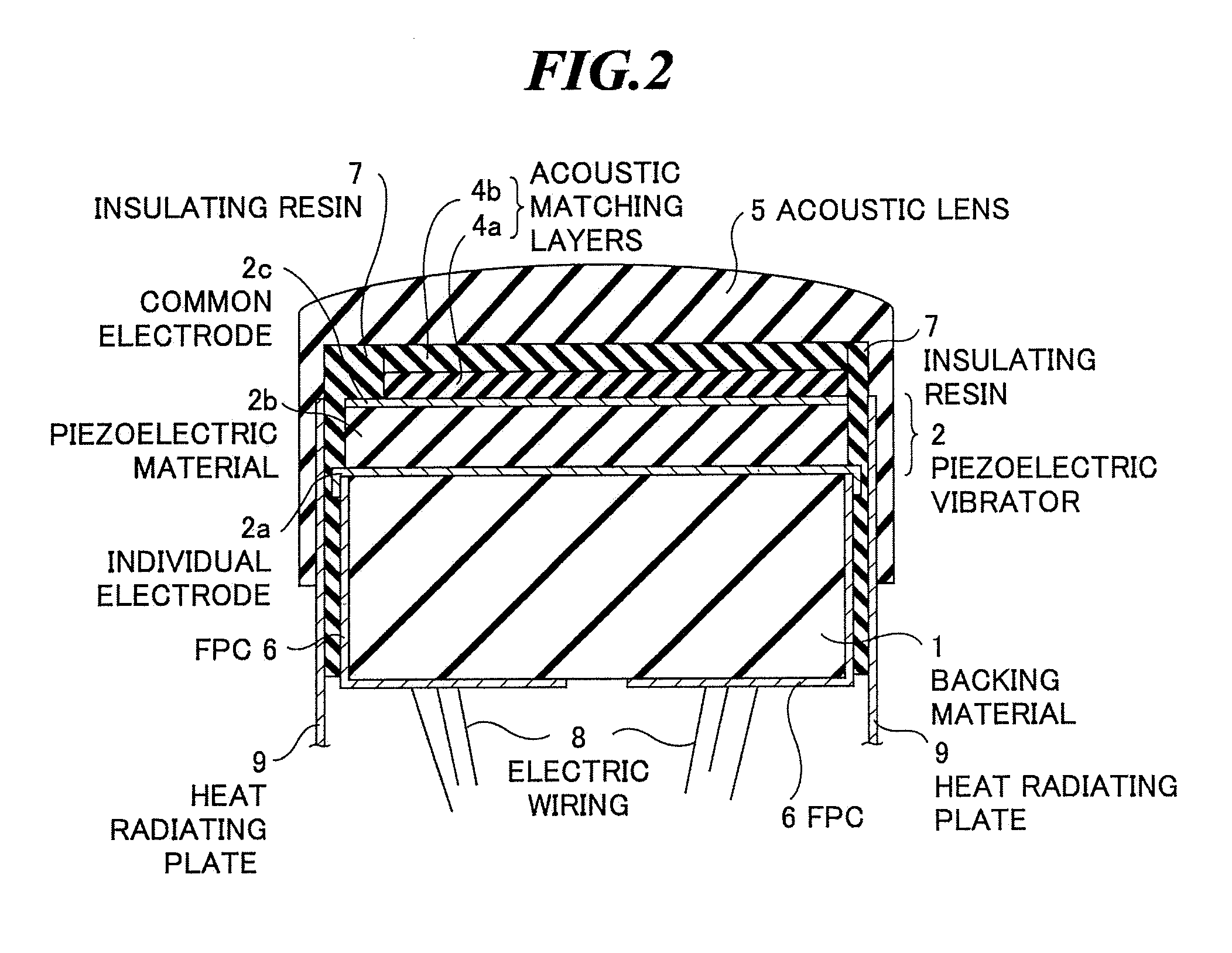Composite piezoelectric material, ultrasonic probe, ultrasonic endoscope, and ultrasonic diagnostic apparatus
a piezoelectric material and ultrasonic probe technology, applied in diagnostics, mechanical vibration separation, medical science, etc., can solve the problems of poor radiation efficiency, large amount of energy turns into heat, and the temperature rise of ultrasonic probes, so as to reduce the peak temperature of the vibrator array used for transmitting or receiving ultrasonic waves in ultrasonic imaging, the effect of increasing the thermal conductivity coefficien
- Summary
- Abstract
- Description
- Claims
- Application Information
AI Technical Summary
Benefits of technology
Problems solved by technology
Method used
Image
Examples
first embodiment
[0045]FIG. 1 is a perspective view schematically showing an internal structure of an ultrasonic probe according to the present invention, and FIG. 2 is a sectional view of the internal structure of the ultrasonic probe shown in FIG. 1 along a plane in parallel with the YZ-plane. The ultrasonic probe is used when extracavitary scan is performed in contact with an object to be inspected or when intracavitary scan is performed by being inserted into a body cavity of the object.
[0046]As shown in FIGS. 1 and 2, the ultrasonic probe has a backing material 1, plural ultrasonic transducers (piezoelectric vibrators) 2 arranged on the backing material 1, an anisotropic heat conducting material 3 provided between those piezoelectric vibrators 2, one or plural acoustic matching layers (two acoustic matching layers 4a and 4b are shown in FIGS. 1 and 2) provided on the piezoelectric vibrators 2, an acoustic lens 5 provided on the acoustic matching layers according to need, two flexible printed ci...
second embodiment
[0072]As shown in FIGS. 7A and 7B, in the composite piezoelectric material used in the present invention, the carbon fibers as the heat conducting members 3a are arranged substantially in parallel to the longitudinal direction of the piezoelectric materials 2b (the Y-axis direction). Thereby, the temperature distribution in the vibrator array is flattened. The longitudinal direction of the heat conducting members 3a may not be necessary to be in parallel to the Y-axis direction, but it is desirable that the angle formed by the heat conducting member 3a and the Y-axis direction is 30° or less for flattening the temperature distribution of the vibrator array.
[0073]The diameter of each carbon fiber is about 10 μm. The resins 3b are formed by pouring the epoxy resin into spaces between the plural fibers and curing it. The volume fraction of carbon fibers in the anisotropic heat conducting material 3 is preferably from 20% to 78%, and 50% in the embodiment. In the second embodiment, espe...
third embodiment
[0079]The coefficient of thermal conductivity of carbon fiber is about 800 W / (m·K), and the coefficient of thermal conductivity of epoxy resin is about 0.2 W / (m·K). Therefore, the coefficient of thermal conductivity of the anisotropic heat conducting material 3 is about 320 W / (m·K) with respect to the longitudinal direction of the carbon fiber and about 0.33 W / (m·K) with respect to the direction perpendicular to the longitudinal direction of the carbon fiber, and they are greatly improved compared to about 0.2 W / (m·K) in the conventional case of the epoxy resin only. In the third embodiment, the coefficients of thermal conductivity are remarkably improved in both X-axis direction and Y-axis direction.
[0080]Next, a modified example of the third embodiment of the present invention will be explained. In the modified example, the piezoelectric vibrator has a multilayered structure as is in the case shown in FIG. 5, and the rest of the configuration is the same as that in the third embod...
PUM
| Property | Measurement | Unit |
|---|---|---|
| surface temperature | aaaaa | aaaaa |
| surface temperature | aaaaa | aaaaa |
| surface temperature | aaaaa | aaaaa |
Abstract
Description
Claims
Application Information
 Login to View More
Login to View More - R&D
- Intellectual Property
- Life Sciences
- Materials
- Tech Scout
- Unparalleled Data Quality
- Higher Quality Content
- 60% Fewer Hallucinations
Browse by: Latest US Patents, China's latest patents, Technical Efficacy Thesaurus, Application Domain, Technology Topic, Popular Technical Reports.
© 2025 PatSnap. All rights reserved.Legal|Privacy policy|Modern Slavery Act Transparency Statement|Sitemap|About US| Contact US: help@patsnap.com



